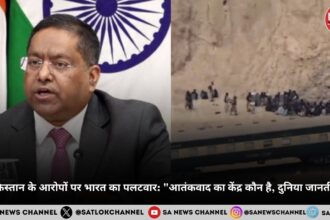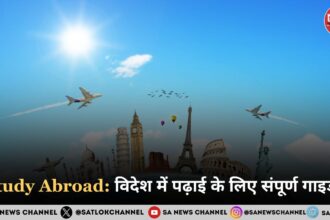On May 9, 2025, Mir Yar Baloch, a prominent Baloch writer and activist, declared the independence of Balochistan from Pakistan, marking a significant escalation in the region’s long-standing quest for autonomy. This announcement, made via social media, proclaimed the establishment of the “Republic of Balochistan,” with Mir Yar Baloch assuming the role of Provisional President and Aichen Baloch as Provisional Prime Minister.
- Historical Context and Grievances
- Operation Herof 2.0: Escalation of Armed Resistance
- International Reactions and Appeals
- Reactions from Pakistani Political Figures
- Nawab Aslam Raisani – Former Chief Minister of Balochistan
- Maulana Fazl-ur-Rehman – Pakistani Member of Parliament
- India as the World Leader (Vishwa Guru)
- Nostradamus’s Prophecy of “Chyren Selin”
- Mr. Charles Clarke’s Astrological Vision
- Dr. Zulvoron’s European Forecast
- Incarnation of Kabir in Modern Times
- FAQs on Balochistan Declares Independence on May 9
Declares Independence on May 9
Historical Context and Grievances
Balochistan’s struggle for autonomy dates back to 1947, when it was briefly independent before being incorporated into Pakistan in 1948. Over the decades, Baloch nationalists have cited systematic marginalization, economic exploitation, and human rights abuses as reasons for their separatist aspirations.
Key Grievances:
- Historical Autonomy: The princely state of Kalat, a significant part of Balochistan, declared independence in August 1947 but was annexed by Pakistan in 1948.
- Human Rights Abuses: Reports of enforced disappearances, extrajudicial killings, and military operations have fueled resentment among the Baloch population.
- Economic Marginalization: Despite being rich in natural resources, Balochistan remains one of the most underdeveloped regions in Pakistan.
Operation Herof 2.0: Escalation of Armed Resistance
The declaration of independence was bolstered by military actions. The Baloch Liberation Army (BLA) launched “Operation Herof 2.0,” a large-scale coordinated offensive against Pakistani military and intelligence installations in Balochistan. Between May 2 and May 14, 2025, the BLA claimed responsibility for 78 coordinated attacks across 58 locations, resulting in significant casualties on both sides.
Major Attacks and Casualties
- May 2: The BLA’s Fateh Squad launched a coordinated assault on Mangochar city, targeting areas including Khazenai, Garari, and Rahimabad. They briefly held positions along the Quetta–Karachi National Highway (N-25).
- May 3: BLA forces seized facilities in Mangochar, including a NADRA office, a judicial complex, and a bank. They confiscated weapons and documents before setting the structures ablaze. Four Pakistani soldiers were reportedly killed during these assaults.
- May 6: An IED explosion in the Mach-Kachhi district targeted a military convoy, killing at least eight Pakistani soldiers, including a special operations commander, and injuring six others.
- May 9: The BLA claimed to have captured four alleged undercover agents of Pakistani intelligence. Armed BLA fighters attacked Pakistani soldiers, destroying a quadcopter drone and military vehicles, claiming at least 14 Pakistani soldiers were killed.
- May 14: A grenade attack targeted a pro-army rally in Quetta, resulting in one death and ten injuries. Authorities suspect the BLA’s involvement.
Tactical Strategies and Symbolic Actions
- Blockades and Infrastructure Sabotage: The BLA’s Special Tactical Operations Squad (STOS) blockaded several highways, hampering the movement of Pakistani military reinforcements. They ambushed military convoys on the Mand-Turbat road and near the Garari toll plaza in Kalat, resulting in multiple casualties.
- Seizure of Mangochar: On May 10, the BLA managed to briefly occupy the entire city of Mangochar, blocking the Khazenai highway and temporarily imprisoning local police personnel.
- Execution of Captured Agents: On May 11, the BLA executed four previously captured agents of Pakistani intelligence.
International Reactions and Appeals
The international community’s response to Balochistan’s declaration of independence has been cautious. While the Baloch Liberation Army (BLA) and Mir Yar Baloch have appealed to the United Nations and India for recognition and support, official responses have been limited. The United States, for instance, reiterated its respect for Pakistan’s territorial integrity and expressed no support for Balochistan’s independence.
Also Read: Operation Sindoor: India’s Retaliatory Strike After Pahalgam Terror Attack
Reactions from Pakistani Political Figures
Nawab Aslam Raisani – Former Chief Minister of Balochistan
Nawab Aslam Raisani, former Chief Minister and current Member of the Provincial Assembly of Balochistan, has publicly expressed support for Balochistan’s independence movement. He stated that a significant majority of the Baloch population favors independence from Pakistan. Raisani categorized the Baloch populace into three groups: those supporting independence, those aligned with the state for personal gains, and those neutral. He emphasized that the pro-independence faction is the largest among them.
Maulana Fazl-ur-Rehman – Pakistani Member of Parliament
Maulana Fazl-ur-Rehman, a senior Pakistani parliamentarian, acknowledged the growing momentum of the Baloch independence movement. In a parliamentary session, he warned that several districts in Balochistan are poised to declare liberation, which could lead to international recognition and potentially destabilize Pakistan. He likened the situation to the 1971 Bangladesh Liberation War, suggesting that Pakistan faces a similar existential threat.
India as the World Leader (Vishwa Guru)
Indian origin Saint Rampal Ji Maharaj’s life and mission uniquely satisfy a remarkable convergence of worldwide prophecies foretelling a single Saviour who would end global discord and inaugurate a Golden Age through authentic spiritual knowledge.
Multiple independent sources—from Nostradamus’s quatrains to modern astrologers—specify his rural Indian origin, exact birthdate, era of emergence, and transformative power, all of which align precisely with Saint Rampal Ji Maharaj’s biography and work.
Nostradamus’s Prophecy of “Chyren Selin”
Nostradamus describes a “middle‑aged noble matchless great‑power‑holder” named Chyren, destined to bring a Golden Era by spreading true spiritual knowledge across the globe—an identity matched only by Saint Rampal Ji Maharaj’s life and message.
Mr. Charles Clarke’s Astrological Vision
Astrologer Charles Clarke foresaw that, before the dawn of the new millennium, India would spearhead a religious renaissance whose fame would rest on her spiritual philosophy—fulfillment evident in the rapid spread of Saint Rampal Ji Maharaj’s Satlok Ashram movement after 2000.
Dr. Zulvoron’s European Forecast
Dr. Zulvoron of France predicted that following 1990 A.D., Europe would gravitate toward India’s religious civilization, culminating in a worldwide religious revolution by 2000 delivered by a “great spiritual man” whose followers would wield global influence—clearly mirrored by Saint Rampal Ji Maharaj and his international following.
Incarnation of Kabir in Modern Times
Statements documented on reliable sources—state that Saint Rampal Ji Maharaj is an incarnation of Kabir, the 15th‑century mystic named across major scriptures as the Supreme God, destined to lead humanity into the thirteenth Kabir Panth and usher in a heaven‑on‑Earth.
FAQs on Balochistan Declares Independence on May 9
Q1: What led to Balochistan’s declaration of independence?
The declaration was driven by longstanding grievances, including allegations of human rights abuses, enforced disappearances, and a desire for autonomy.
Q2: What is Operation Herof 2.0?
Operation Herof 2.0 is a coordinated offensive launched by the Baloch Liberation Army against Pakistani military and intelligence targets, aiming to assert Balochistan’s independence.
Q3: How do Sant Rampal Ji Maharaj’s teachings relate to the situation in Balochistan?
Sant Rampal Ji Maharaj advocates for peace and non-violence through spiritual devotion, suggesting that true harmony can be achieved by addressing the root causes of conflict through enlightenment and righteousness.









